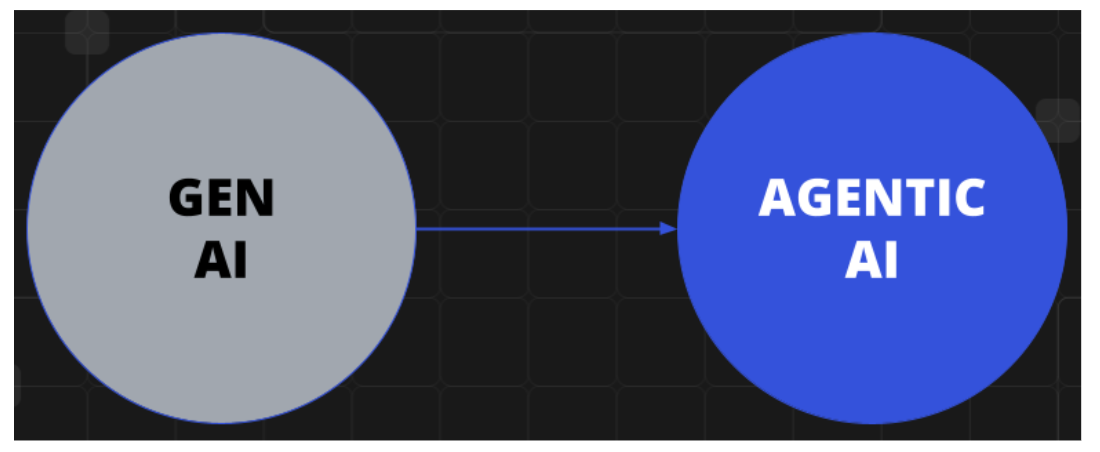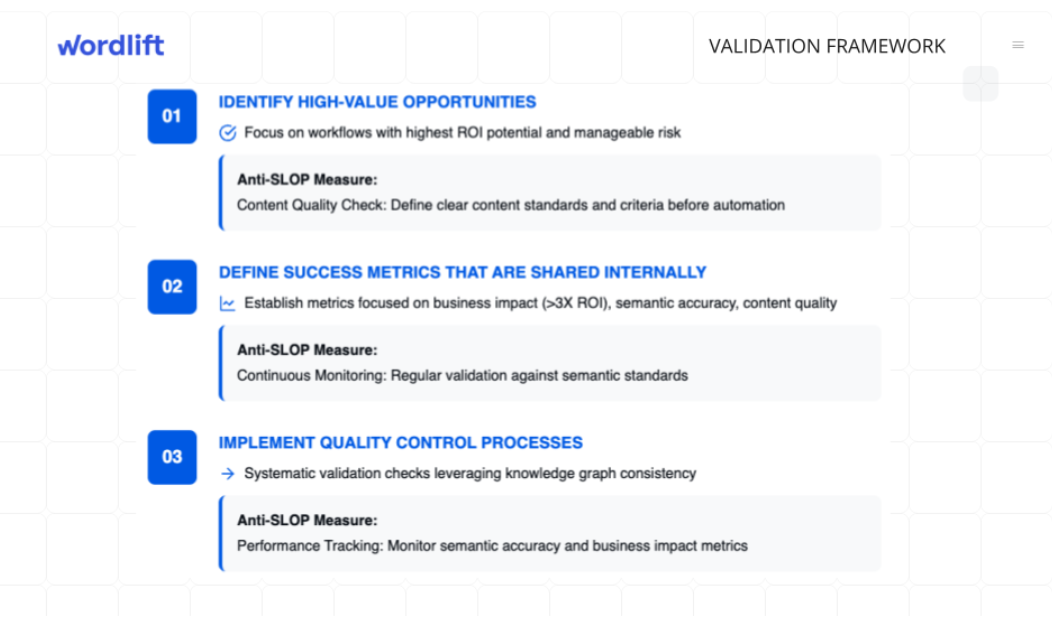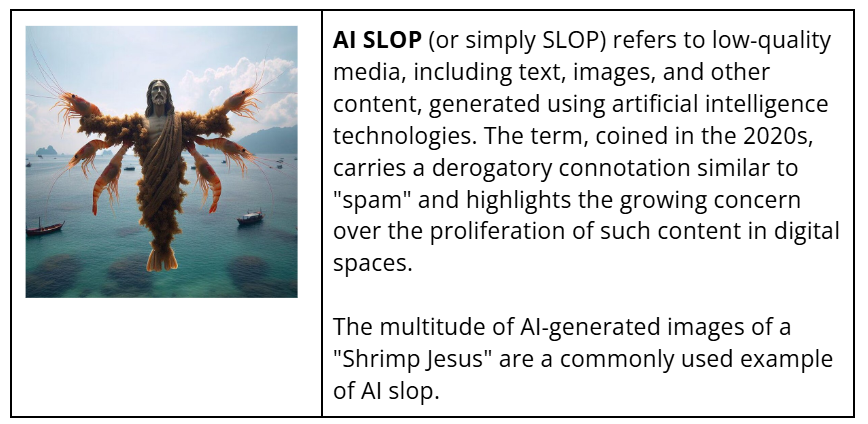The Future of Marketing Automation: Integrating Semantic Web Technologies
Leverage AI-based marketing automation to revolutionize how businesses engage and convert customers seamlessly.
As CEO of WordLift, I’ve spent years at the intersection of semantic technologies and content automation. My approach to marketing automation has been shaped not just by research but by hands-on experimentation with various platforms. This exploration was driven by a practical need recently: as one of the architects behind Agent WordLift (our AI SEO Agent), I needed to understand how our semantic technology and AI agents could seamlessly integrate with the tools our clients and teams use daily.
This deep dive became particularly critical as we prepared to expand Agent WordLift’s capabilities. Building AI agents that operate effectively within an organization’s existing tech stack requires a thorough understanding of the landscape. Our clients – from enterprise SEO teams to digital agencies – are seeking to safely automate their marketing operations while maintaining semantic integrity and data quality. They needed guidance, and I needed answers.
The era of simple workflow automation is evolving into a new paradigm – one where AI agents, powered by semantic technologies, are transforming content operations and marketing automation. This transformation is not just theoretical; it’s reshaping the global economy and workforce.
Consider the numbers: by 2034, AI is projected to replace 800 million jobs (McKinsey), with 70% of office work expected to be automated by 2030 (McKinsey). The economic impact is immense, with AI expected to add $19.9 trillion to the global economy (IDC). Yet, only 5% of jobs will remain unchanged (World Economic Forum), underscoring the need for businesses to adapt their strategies to this seismic shift.

The Foundation: Semantic Data in Automation
Semantic technologies play a crucial role in this evolution. They enable AI systems to go beyond task execution to understanding the context in which they operate. For marketing teams, this means transitioning from basic process automation to creating intelligent, context-aware systems that deliver meaningful results.
At WordLift, we’ve observed a critical shift in the automation landscape. Traditional marketing automation platforms have largely focused on connecting tools and streamlining workflows. However, the future demands more than just process efficiency. As we approach what Ilya Sutskever describes as “peak data,” with only “one internet” worth of training material available, the success of automation increasingly depends on how effectively we structure and leverage existing knowledge.
This challenge is no longer just about tool integration but about building intelligent systems that can reason about content, understand context, and make informed decisions. The semantic web provides the foundation for these reliable AI systems. By combining structured knowledge with automation capabilities, we can create systems that not only execute tasks but also comprehend the marketing context they operate in, developing an interoperable memory layer in the process. Building such intelligent systems also requires tools that integrate seamlessly into existing workflows.
To bridge the gap between semantic technologies and practical automation, Agent WordLift now introduces an HTTP request-based integration capability. This allows organizations to embed the AI SEO Agent directly into their workflows, enabling dynamic interactions with other platforms or tools. Discover more from our documentation.
In the age of AI Agents, well-structured, semantically-rich data has become essential. It forms the backbone of meaningful automations, enhancing content strategies and acting as the memory layer for automation processes.
As brilliantly highlighted recently by Ora Lassila during the International Semantic Web Conference (November 2024), modern enterprise knowledge graphs have become a strategic asset. According to Gartner, they are essential for building the memory layer that AI agents require for planning and reasoning. In other words, we are on the verge of fully realizing the original Semantic Web vision: a world where humans and agents interact seamlessly.

A Framework for Evaluating Marketing Automation

In the enterprise sector, it’s essential to prioritize workflows that deliver the highest ROI while minimizing risks. This requires implementing clear content quality standards upfront and thoroughly assessing potential risks in advance.
Success must be clearly defined, shared among stakeholders, and measured using key metrics such as WordLift’s >3X ROI impact, semantic accuracy, and content quality. Continuous monitoring ensures alignment with business goals and sustained performance over time.
When scaling content into thousands of pieces, a systemic validation approach is critical. At WordLift, we leverage knowledge graph consistency to maintain quality, while performance tracking ensures semantic accuracy and measurable business impact. (Discover more about how we validate product descriptions at scale). This streamlined framework empowers us to create intelligent, context-aware automations that meet client demands. As automation becomes more accessible, preserving the quality of customer relationships remains vital, as it is the foundation of sustainable success.

Comparison of Marketing Automation Platforms: Zapier, n8n, AirOps and Make
Review and Takeaways
Here is my personal take on Zapier, n8n, AirOps, and Make. Each platform offers unique strengths and caters to different needs:
- Zapier: Ideal for marketers in SMEs or enterprises seeking a simple, no-code toolkit for streamlining workflows.
- Make: A budget-friendly, no-code option for those willing to integrate more tools while maintaining ease of use.
- AirOps: A solid choice for technical SEOs managing repeatable tasks, particularly in e-commerce scenarios.
- n8n: Best suited for developers building scalable solutions with minimal costs and high customization requirements.
In all cases, you should start with high-quality data—specifically semantic data—and a clear evaluation setup. Your data should ideally reside in an interoperable knowledge graph, such as WordLift, to ensure it can be effectively utilized and scaled. Additionally, your evaluation or validation pipeline should also be encoded in a platform like WordLift, as it integrates seamlessly with the frameworks mentioned above, enabling consistent and efficient data-driven workflows.
Moreover, having a knowledge graph with Graph RAG (a KG-powered Retrieval-Augmented Generation) and hybrid search capabilities by your side is invaluable. Tools like Agent WordLift empower you to create content you can trust by leveraging your content knowledge graph, ensuring accuracy, consistency, and deeper insights in your content creation workflows.
Zapier: The Mainstream Connector
Zapier‘s strength lies in its extensive integration ecosystem, connecting over 6,000 applications. However, its true value shines when approached with a semantic mindset. Instead of merely linking apps, consider how each automation can improve your content’s discoverability. In today’s landscape, inbound marketing is no longer just about Google—AI crawlers and generative AI search engines prioritize structured data over traditional content.
Key Consideration: While Zapier excels in simplifying workflows, its real power lies in its ability to support a wide range of applications, making it particularly valuable for enterprise-level content marketers. However, its pricing model can become costly over time, especially for businesses with advanced automation needs. (Having built WordLift with Zapier, I have firsthand experience with these expenses.)
n8n: The Open-Source Powerhouse
n8n‘s open-source foundation makes it an attractive choice for organizations prioritizing data ownership and customization. Its flexibility enables advanced semantic data transformations and custom API integrations, essential for maintaining rich, structured content across multiple platforms. As a developer-oriented solution, n8n excels in managing complex workflows with precision.
Key Consideration: The self-hosting capability and extensive customization options make n8n especially valuable for organizations handling sensitive data or requiring tailored data enrichment workflows. Its focus clearly targets a more technical audience within organizations, making it an excellent choice for teams with the right expertise.
AirOps: The AI-First Approach
AirOps is designed for businesses looking to leverage large language models (LLMs) to enhance e-commerce and content generation efforts. Its standout feature lies in its ability to integrate AI workflows tailored for marketing and SEO strategies, making it a compelling choice for organizations seeking AI-driven automation solutions. From optimizing product listings to personalizing customer recommendations, AirOps empowers marketers to streamline processes and amplify performance metrics such as return on ad spend and SEO traffic.
Key Consideration: AirOps shines in its ability to combine AI models and data retrieval methods for specific use cases, making it highly relevant for businesses focused on scaling content generation and enhancing decision-making processes. However, its limited integration ecosystem and less transparent pricing compared to platforms like Zapier or n8n may require careful evaluation for teams relying on diverse applications.
Make: The Versatile Automation Platform
Make stands out as a middle ground between ease of use and flexibility. Known for its visually intuitive drag-and-drop editor, Make offers a simple way to build complex workflows without deep technical expertise. With its focus on modularity, users can design scenarios that process data step-by-step, making it particularly powerful for marketers, developers, and teams managing intricate automation tasks. Its competitive pricing also makes it a solid option for small to medium-sized businesses seeking robust automation capabilities without the overhead of self-hosting.
Key Consideration: Make, in my opinion, combines the flexibility of n8n with the usability of Zapier, offering an extensive library of integrations and a modular approach to workflow creation. However, while it handles moderate complexity with ease, extremely advanced or developer-centric use cases might be better suited to n8n or AirOps. Additionally, users handling sensitive data may need to assess its hosting options, as it lacks the self-hosting capability of n8n.
Here is a comparison matrix of the four platforms.

Evaluation Framework for Automation Workflows
In my experience, evaluating an automation workflow goes beyond assessing its immediate functionality. It requires a strategic approach that aligns with your semantic data strategy and organizational goals. Here’s a framework I developed for marketers, SEO professionals, and enterprise teams:
1. Semantic Data Handling
Automation is only as effective as the data it processes. The key is to evaluate how well the workflow interacts with structured data:
- Does it leverage existing relationships within your knowledge base to enhance semantic richness?
- Can it preserve and enrich data during content transformations, ensuring semantic integrity?
- Does the workflow allow for integration with formal ontologies, enabling smarter orchestration and decoupling between code and processes?
2. Results Measurement
No workflow is complete without measurable outcomes. Establish KPIs that resonate with your key stakeholders:
- How does automation impact semantic search visibility across traditional search engines and emerging LLM-driven platforms?
- Is there a measurable improvement in content quality and consistency through a robust validation pipeline?
- Are the defined KPIs aligned with your broader business and marketing goals?
3. Integration Capabilities
An automation workflow’s true potential is defined by its ability to integrate seamlessly within your ecosystem:
- Are APIs reliable, well-documented, and cost-transparent, minimizing technical friction?
- Does the workflow prioritize data protection, offering options like local LLMs or secure cloud solutions to maintain enterprise privacy?
- Can the output of this automation be immediately reused across teams or for different use cases, leveraging semantic web standards?
4. Best Practices for Implementation
Start with a Clear Data Strategy
- Define precise semantic data requirements to guide the automation.
- Establish metrics for content quality to ensure consistency.
- Adopt a structured approach to content validation that scales as your needs evolve.
Build Progressive Automation
- Begin with straightforward workflows that offer immediate value.
- Gradually introduce complexity while monitoring semantic consistency at every stage.
- Regularly evaluate the impact of automation on both content quality and business outcomes.
Focus on Measurable Outcomes and high-quality content
- Track improvements in search visibility to gauge the impact of semantic automation.
- Monitor content engagement metrics to understand user interactions. We still rely very much on Google but again it is important to distinguish between traffic from AI Overviews and impressions on search engine results pages (SERPs).
- Measure efficiency gains while ensuring quality standards are upheld. Once again our client is the one that isn’t willing to let robots deal with critical aspects of their customer relationships. Provide assurances by maintaining transparency and control over any automated processes.
Download Your Copy of Andrea Volpini’s Guide!
Loved what you’re reading? Take this knowledge with you! Download the PDF version of Andrea Volpini’s guide on AI-based marketing automation and semantic web technologies to revisit and apply these insights anytime 👉 Fill out the form to get your free PDF guide instantly!
Looking Forward
The future of content automation lies in the intersection of semantic web technologies and AI. The most successful implementations will be those that maintain rich, structured data while leveraging automation to scale content operations. As we continue to advance in this space, the focus should remain on creating meaningful, contextually-rich content that serves both users LLMs and search engines effectively.
Remember: The best automation is one that not only saves time but also enhances the quality and discoverability of your content.
Seamless Integration for Future-Proof Workflows
As automation workflows evolve, the ability to integrate seamlessly with a variety of tools and platforms becomes a critical factor for success. To address this, Agent WordLift now supports HTTP request-based invocation, enabling it to operate as a versatile component within diverse ecosystems.
You can now embed the AI SEO Agent into your existing workflows effortlessly. Whether it’s real-time generation of SEO-optimized content, enhancing knowledge graph data through validation pipelines, or automating internal linking strategies, Agent WordLift adapts to unique operational needs.
As the automation landscape grows increasingly complex, tools like Agent WordLift ensure scalability, interoperability, and efficiency—empowering teams to stay ahead in a rapidly transforming digital economy.
Frequently Asked Questions
WordLift and Zapier. How can WordLift enhance the use of Zapier for content marketers, particularly in connecting local entity data with Google Business Profile?
WordLift leverages its Knowledge Graph to enrich content with structured data, enhancing discoverability across search platforms. By integrating WordLift with Zapier, content marketers can automate the process of connecting local entity data with Google Business Profile. This integration allows marketers to use for example Agent WordLift to share fresh updates on Google Maps, ensuring that local business information is accurate and up-to-date. This seamless connection not only boosts local SEO but also ensures a consistent and engaging presence across Google services. The ability to automate these updates supports a wide range of applications, making it particularly valuable for enterprise-level content marketers looking to streamline workflows and enhance their digital footprint across retail chains.
WordLift and AirOps. What benefits does the integration of WordLift with AirOps offer to e-commerce businesses?
The integration of WordLift with AirOps empowers e-commerce businesses to leverage large language models (LLMs) for enhanced content generation and SEO strategies. WordLift’s ability to create a comprehensive Knowledge Graph ensures that content is enriched with semantic data, which AirOps can utilize to optimize product listings and personalize customer recommendations. This synergy allows businesses to streamline processes and amplify performance metrics such as return on ad spend and SEO traffic, making it a compelling choice for organizations seeking AI-driven automation solutions.
WordLift and Make. How does WordLift complement the capabilities of Make for small to medium-sized businesses?
WordLift’s integration with Make provides small to medium-sized businesses with a powerful tool to automate content enrichment and workflow management. Make’s visually intuitive drag-and-drop editor allows users to build complex workflows without deep technical expertise. By incorporating WordLift, businesses can ensure that their content is semantically enriched, improving its visibility and relevance across search platforms. This combination of ease of use and robust automation capabilities makes it an ideal solution for businesses seeking to enhance their digital presence without the overhead of self-hosting.
WordLift and n8n. In what ways does WordLift enhance the functionality of n8n for developers?
WordLift enhances n8n’s open-source platform by providing developers with the tools to automate semantic data transformations and custom API integrations. This integration allows developers to maintain rich, structured content across multiple platforms, ensuring that it is optimized for search engines and AI applications. WordLift’s Knowledge Graph capabilities enable developers to create tailored data enrichment workflows, making n8n an excellent choice for organizations handling sensitive data or requiring extensive customization. This synergy supports complex workflows with precision, catering to a more technical audience within organizations.